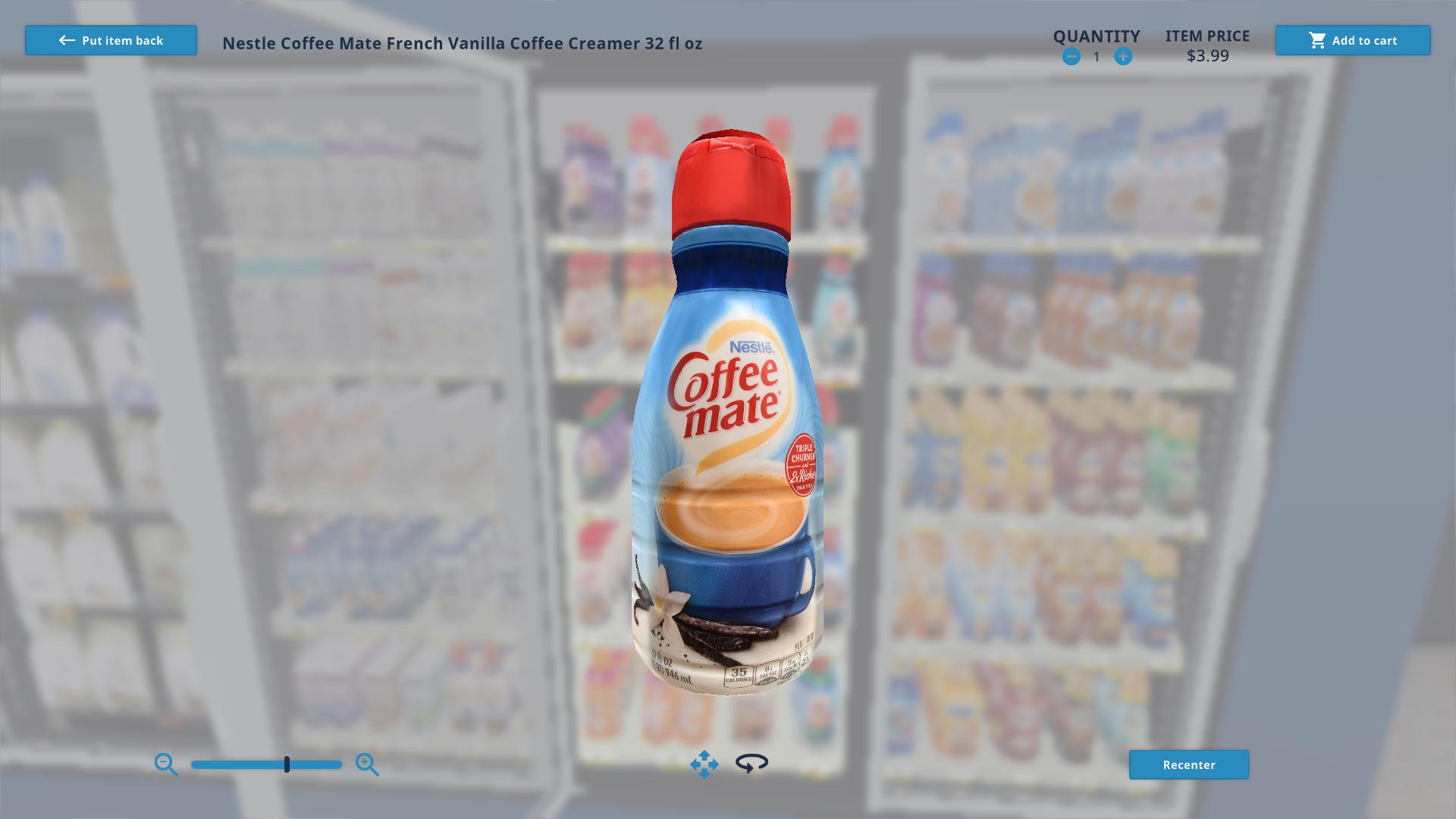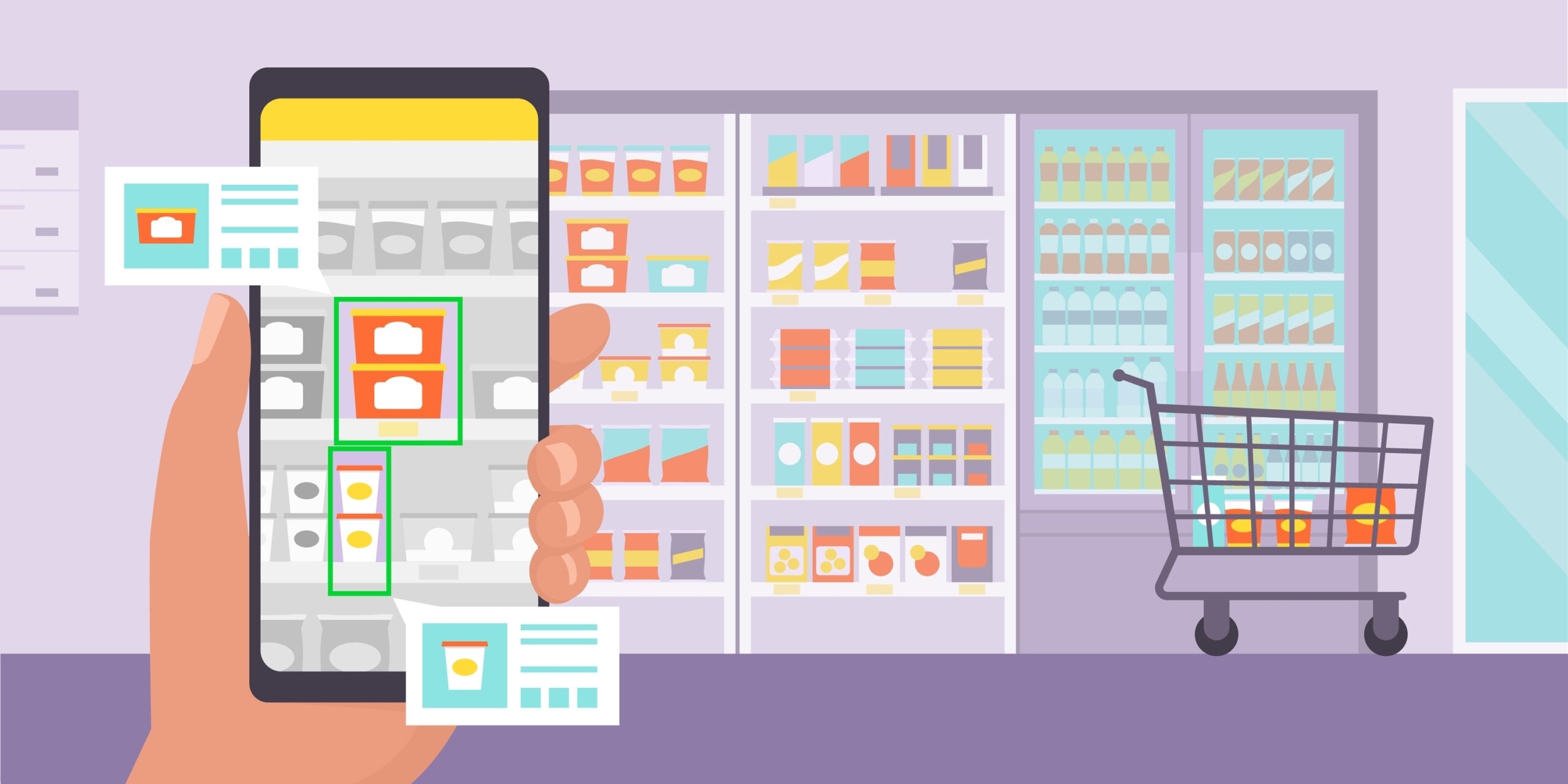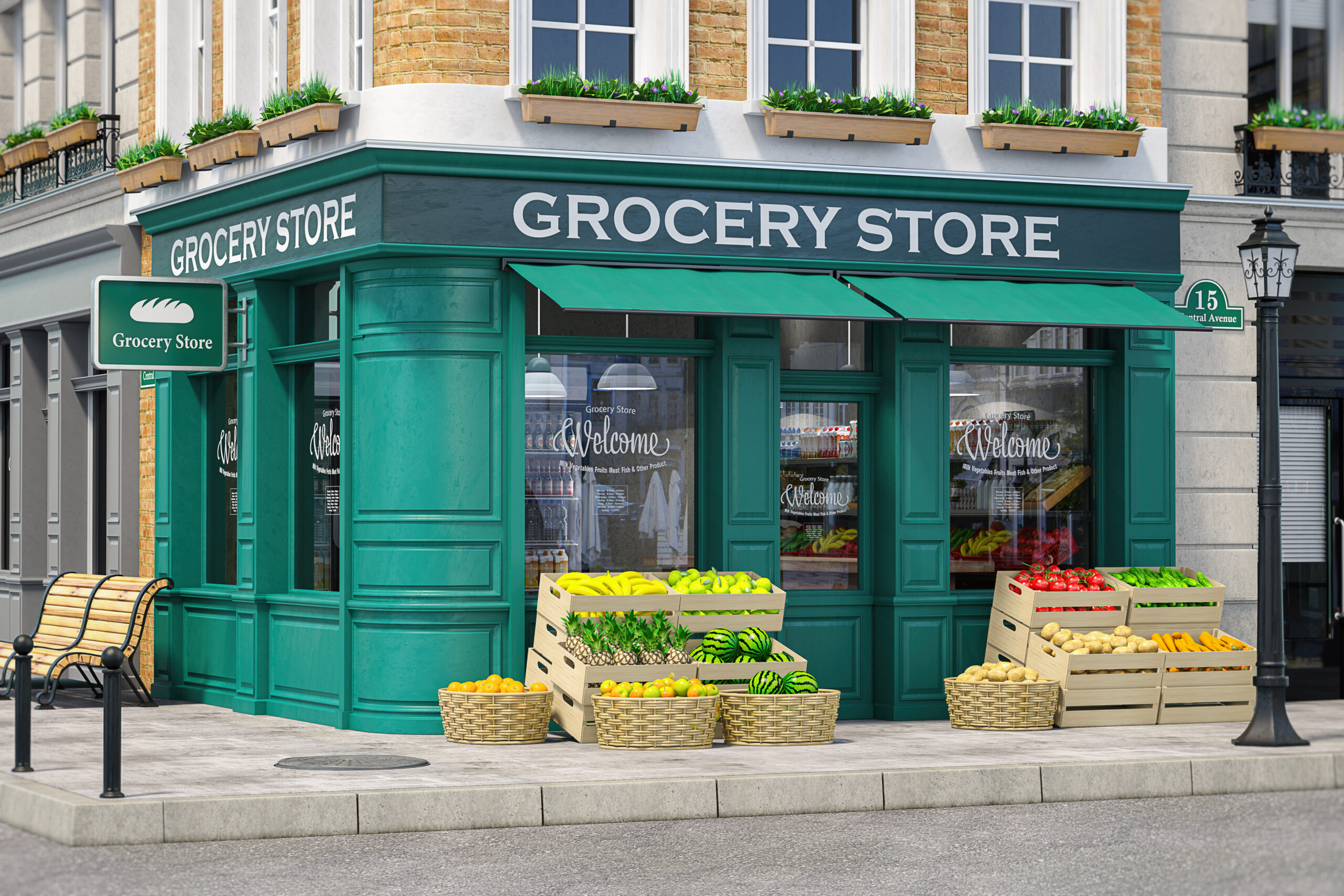Consumer packaged goods (CPGs) have always played a pivotal role in the retail industry, serving as essential staples that consistently attract and retain customers. However, the visual digitization of these goods has sparked a transformative revolution. From virtual product testing to immersive shopping experiences, the fusion of technology and CPG images has redefined how retailers interact with their audiences and sell their products. This blog post will explore the cutting-edge world of extended reality (XR) and how InContext’s 3D visualizers set a new standard for CPG marketing in this digital age. Get ready to discover how these innovative solutions reshape how retailers engage customers and make decisions in a rapidly changing market.
The CPG digital transformation
Consumer packaged goods (CPGs) encompass various everyday items, including food and beverages, toiletries, cleaning products, cosmetics, and more. Characterized by their standardized packaging and relatively short shelf life, CPGs are essential to the retail industry because they constitute a substantial portion of a store’s inventory and sales.
Until recently, the marketing of CPGs has been traditionally isolated to photographs of the products that were edited in graphic design programs like Photoshop. However, at a pivotal juncture in the retail industry’s evolution, the transition from traditional product photography to digitizing products through 3D modeling and rendering marked a profound transformation in how CPGs were showcased. This shift hinged on sophisticated 3D design services and rendering techniques, enabling the creation of photorealistic product visualizations that rivaled traditional photography. All those things can come together with the help of a professional 3D visualizer.
What is a 3D visualizer?
A 3D visualizer—also known as 3D graphic artist or 3D renderer—is a skilled professional who creates three-dimensional digital representations of objects, spaces, or scenes using computer software. These experts use their artistic and technical skills to produce photorealistic 3D renderings that are utilized across various industries, including architectural visualization, interior design, product visualization, and more.
By crafting photorealistic 3D renderings, companies gain the flexibility to showcase their products in various customizable and interactive ways. Imagine being able to walk through the architectural design of a building in detail long before the building process has started, or seeing your new home fully furnished before you’ve even purchased a sofa. No longer bound by the constraints of physical prototypes or traditional photography, this approach revolutionizes product visualization. Businesses can now utilize these digital assets for marketing, advertising, and even virtual product testing, providing customers with immersive and dynamic experiences that enriches their understanding and appreciation of CPGs in entirely new ways. As a result, the digitization of products through 3D rendering and visualization tools has become indispensable in the modern retail arsenal, offering endless possibilities for creativity and engagement.
3D visualization at InContext
At InContext, our 3D visualizers are not just skilled in the art of transforming images from 2D to 3D; they are true experts in their craft. We take immense pride in the quality and precision of our visualizations, knowing that the smallest details can make a significant impact. What sets our team apart is their ability to create stunning 3D images and their deep expertise in understanding how these visual assets are best utilized for diverse applications.
Unlike other 3D visualization companies, we’ve served the emerging 3D market since 2009 and have over 100,000 CPG images to prove it. Our 3D visualization service caters to the specific needs of CPG companies. With a talented pool of 50+ 3D artists, InContext has the remarkable capacity to produce more than 5,000 3D product models each month, making us specialists in delivering high-quality 3D product assets. By offering such a robust and scalable solution, we continue to contribute to the digitization of 3D product modeling for CPGs, helping these companies enhance their online presence, streamline marketing efforts, and provide more immersive and engaging experiences for consumers in the digital realm.
The impact of 3D visualization on CPGs
3D visualization has undeniably profoundly impacted consumer packaged goods (CPGs) within the retail landscape. The ability to create hyper-realistic digital product representations has transformed how products are marketed, tested, and visualized, enabling companies to offer immersive experiences and make data-driven decisions.
With high-quality 3D renderings of CPGs, you can:
Test them
3D visualizations of CPG products offer a versatile and powerful tool for testing and refining various aspects of these products. Regarding product design, 3D visualizations allow designers and manufacturers to create virtual prototypes and easily explore different design concepts. This includes experimenting with different shapes, sizes, and materials to optimize the product’s functionality and aesthetics. By visualizing the product in a realistic 3D environment, stakeholders can quickly identify any potential flaws and make necessary adjustments before physical prototypes are produced, saving time and resources in product development.
Additionally, 3D visualizations can be invaluable for testing package design. Designers can place the virtual CPG product in various simulated real-world scenarios and assess how a shopper might interact with it given the competition of other products.. This ensures that the package design remains eye-catching in order to attract consumer attention on store shelves. By using 3D visualizations to evaluate the effectiveness of package design changes, companies can make data-driven decisions to optimize revenue opportunities.
Build out virtual stores
3D visualizations of CPG products can be employed to create digital renderings or digital twins of retail stores with our platforms such as ShopperMX, offering a revolutionary way to test and predict outcomes. When introducing a new store layout, digital simulations can help retailers and manufacturers assess how the store environment will perform before any physical implementation. By populating the digital twin with its real life products and analyzing customer behavior through virtual shopping scenarios, businesses can gain insights into how customers interact with items on the shelves, and whether it drives sales effectively. This proactive approach allows for adjustments before going live, mitigating potential risks and ensuring a smoother roll-out.
3D visualizations also enable the testing of cross-category merchandising strategies. Businesses can virtually rearrange products from different categories within the digital store and observe how these changes impact customer behavior, sales, and overall store performance. For instance, they can evaluate the effectiveness of cross-promotions, product bundling, or adjacency strategies to drive upselling and cross-selling opportunities. By optimizing the arrangement of products in the digital twin, retailers can tailor their physical store layouts more effectively, increasing customer engagement and overall store profitability.
Use them for marketing
3D visualizations of CPG products offer exciting possibilities for shopper marketing initiatives. These digital representations can be leveraged to create stunning and immersive marketing materials. For example, companies can produce high-quality 3D renders showcasing their products from various angles, highlighting key features and benefits. These visual assets can be used in digital advertising campaigns, on websites, and in social media posts to capture the audience’s attention and convey the product’s value better than traditional 2D images. The interactive nature of 3D visualizations allows customers to explore the product virtually, rotating it, zooming in for close-ups, and even simulating product usage, providing a more comprehensive and memorable marketing experience.
3D visualizations can also create immersive virtual showrooms or product configurators. These tools allow customers to customize products in real-time, selecting different colors, sizes, or accessories and seeing the changes reflected in the 3D model. This interactive approach engages customers and helps them visualize how the product fits into their lives, increasing their confidence and likelihood of purchasing. By integrating these 3D marketing assets into their strategies, CPG companies can differentiate themselves in the market, improve customer engagement, and ultimately drive sales by providing a more immersive and informative brand experience.
Jump into the metaverse
Businesses and retailers can harness the power of 3D visualizations of CPG products to seamlessly transition into the metaverse; a digital, immersive, and interconnected virtual space. By creating lifelike 3D models of their products, companies can establish a virtual presence within the metaverse, allowing customers to interact with their products in entirely new ways. In the metaverse, consumers can explore virtual stores, interact with products, and even make purchases using cryptocurrency or other digital payment methods. This opens up exciting opportunities for e-commerce in a metaverse environment, where traditional brick-and-mortar limitations are transcended, and the shopping experience becomes more engaging and interactive.
3D visualizations enable businesses to create branded virtual spaces and pop-up shops within the metaverse. These digital storefronts can be designed to reflect the company’s identity and ethos, providing an immersive brand experience for users. Retailers can host virtual events, product launches, or promotional campaigns in these metaverse spaces, attracting a global audience of digital-savvy consumers.
Collaborate with other teams
Businesses and retailers can harness 3D visualizations as a powerful collaborative tool, enabling seamless cooperation with other teams, even when they are located in different states or regions. These digital representations of products and spaces provide a common platform for collaboration, allowing global teams to work efficiently. For instance, in product design, multiple stakeholders from different locations can access and interact with 3D product models, making it possible to provide feedback, suggest improvements, and iterate on designs collaboratively. This streamlines the design process and reduces the need for physical prototypes and costly travel, saving both time and resources.
Businesses can also use 3D visualizations to collaborate on visual merchandising strategies. Retailers in different states can share virtual store layouts, planogram designs, and product placement ideas using 3D models of store environments. This collaborative approach allows for consistent branding and marketing strategies across different locations, ensuring that the customer experience remains cohesive. It also facilitates cross-promotion coordination and joint marketing efforts among businesses, even when they are geographically distant.
Partner with InContext today
As a leader in 3D visualization, InContext’s team of experts stands ready to revolutionize your CPG operations. Our skilled professionals possess the knowledge and creativity to transform your products and spaces into stunning, photorealistic 3D renderings. Whether optimizing product design, enhancing marketing strategies, or navigating the digital landscape, our team can help you unlock new levels of innovation and efficiency in the CPG industry. We understand that running a business is more than a full-time job, so we’re here to help. With InContext, you can visualize a brighter future for your brand and stay at the forefront of technological advancements.




